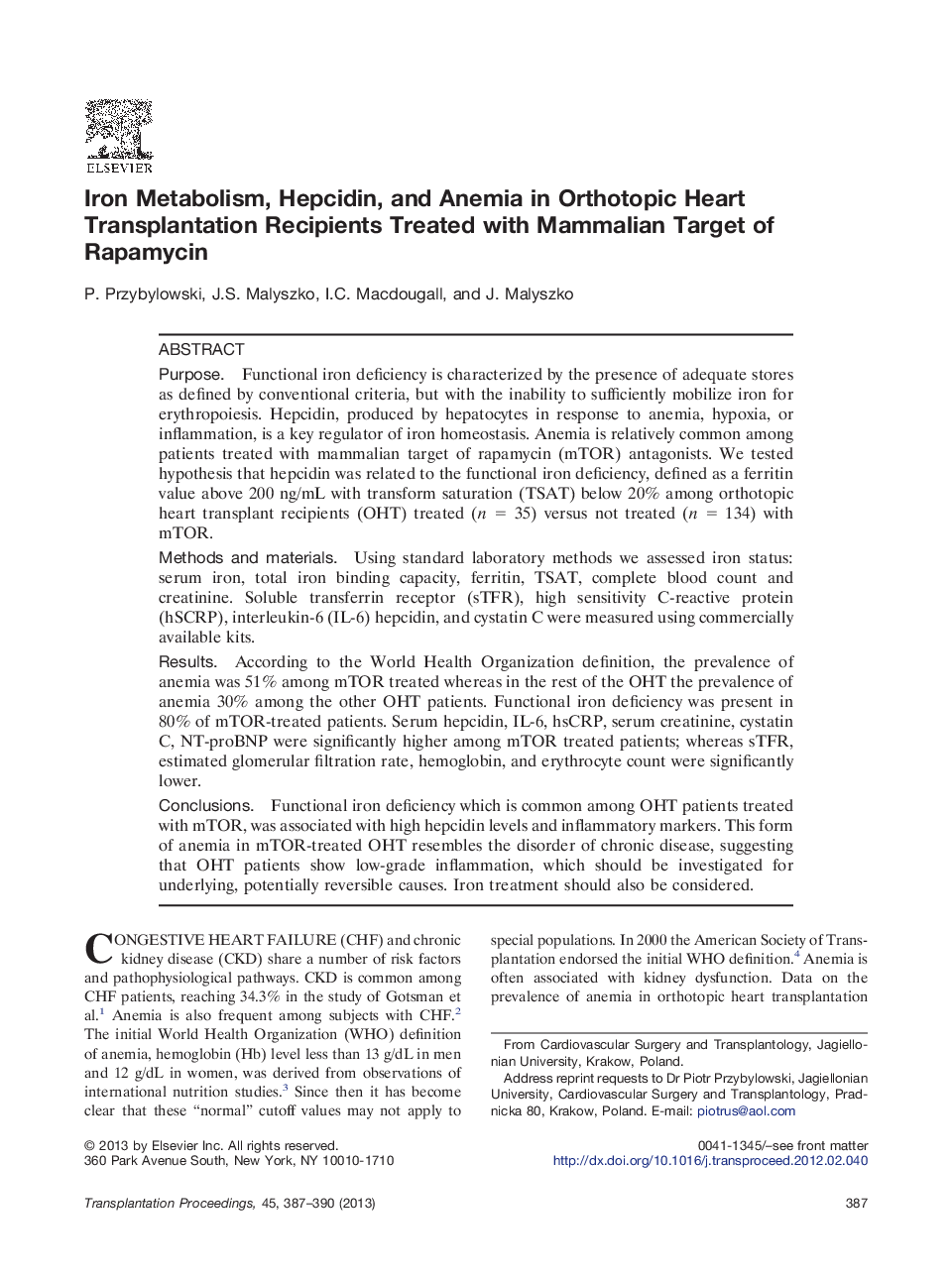| کد مقاله | کد نشریه | سال انتشار | مقاله انگلیسی | نسخه تمام متن |
|---|---|---|---|---|
| 4257130 | 1284539 | 2013 | 4 صفحه PDF | دانلود رایگان |

PurposeFunctional iron deficiency is characterized by the presence of adequate stores as defined by conventional criteria, but with the inability to sufficiently mobilize iron for erythropoiesis. Hepcidin, produced by hepatocytes in response to anemia, hypoxia, or inflammation, is a key regulator of iron homeostasis. Anemia is relatively common among patients treated with mammalian target of rapamycin (mTOR) antagonists. We tested hypothesis that hepcidin was related to the functional iron deficiency, defined as a ferritin value above 200 ng/mL with transform saturation (TSAT) below 20% among orthotopic heart transplant recipients (OHT) treated (n = 35) versus not treated (n = 134) with mTOR.Methods and materialsUsing standard laboratory methods we assessed iron status: serum iron, total iron binding capacity, ferritin, TSAT, complete blood count and creatinine. Soluble transferrin receptor (sTFR), high sensitivity C-reactive protein (hSCRP), interleukin-6 (IL-6) hepcidin, and cystatin C were measured using commercially available kits.ResultsAccording to the World Health Organization definition, the prevalence of anemia was 51% among mTOR treated whereas in the rest of the OHT the prevalence of anemia 30% among the other OHT patients. Functional iron deficiency was present in 80% of mTOR-treated patients. Serum hepcidin, IL-6, hsCRP, serum creatinine, cystatin C, NT-proBNP were significantly higher among mTOR treated patients; whereas sTFR, estimated glomerular filtration rate, hemoglobin, and erythrocyte count were significantly lower.ConclusionsFunctional iron deficiency which is common among OHT patients treated with mTOR, was associated with high hepcidin levels and inflammatory markers. This form of anemia in mTOR-treated OHT resembles the disorder of chronic disease, suggesting that OHT patients show low-grade inflammation, which should be investigated for underlying, potentially reversible causes. Iron treatment should also be considered.
Journal: Transplantation Proceedings - Volume 45, Issue 1, January–February 2013, Pages 387–390